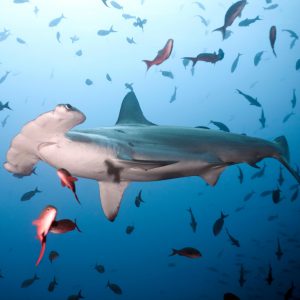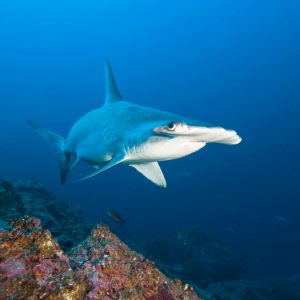“Mr. Speaker, I would like to see the 6 million seals, or whatever number is out there, killed and sold, or destroyed and burned. I do not care what happens to them…the more they kill the better I will love it.”
– John Efford, former Canadian Minister of Natural Resources
Opinion polls consistently show a clear majority of Canadians oppose the commercial seal hunt. Nearly 70 percent of Canadians oppose the seal hunt outright, with even higher numbers against specific, inherent aspects of the hunt—such as the killing of seal pups. (Environics Research, 2005)
In recent months, domestic and international opposition to the commercial seal hunt has steadily gained momentum as images of extreme cruelty at the hunt—including the skinning of live animals—have been broadcast around the world. This opposition has resulted in effective consumer action campaigns targeting Canada’s seafood and tourism industries.
In light of the high level of public opposition, and the potential threat to other industries, many people ask why the Canadian government continues to defend and support the seal hunt. The answer is rooted in a history of fisheries mismanagement and the current political situation in Canada.
Seals – an ideal scapegoat
In the 1950s and 60s, industrial fishing fleets decimated fish stocks off Canada’s East Coast, hauling up in one hour twice the amount of fish a sixteenth century ship would take an entire season to catch. By the 1970s, it was clear the northern cod population was on the brink of collapse.
At the end of the same two decades, the harp seal population was also in a steep decline as a result of massive over-hunting. By 1974, senior Canadian government scientists were so concerned they warned that the harp seal population could be lost forever in the absence of a 10 year moratorium on sealing.
The world acted to save the seals. In 1983, responding to intense public pressure, the European Union stepped in and banned the import of whitecoat and blueback sealskins—the main products of the commercial seal hunt at the time. Since Europe was the hunt’s primary market, kill levels dramatically declined and the harp seal population slowly began to recover.
The cod were not as lucky. In the 1970s, Canada established a ‘200 mile limit’ to protect fish stocks from foreign fishing fleets. But instead of using the new law to allow stocks to rebuild, Canadian fishing companies dramatically increased their own take. Ignoring and suppressing advice from its own scientists, Canada’s Department of Fisheries and Oceans (DFO) authorized highly unsustainable quotas throughout the 1970s and 80s. By the 1990s, with northern cod stocks at only one percent of their historic levels, it was clear decades of over-fishing had resulted in an ecological catastrophe. In 1992, a moratorium was declared on cod fishing.
“All scientific efforts to find an effect of seal predation on Canadian groundfish stocks have failed to show any impact. Overfishing remains the only scientifically demonstrated conservation problem related to fish stock collapse.”
– From a petition signed by 97 scientists from 15 countries at the 11th Biennial Conference on the Biology of Marine Mammals, December 1995
As 40,000 Atlantic Canadians lost a primary source of income, the DFO attempted to blame factors beyond their control. And despite a consensus in the scientific community to the contrary, seal predation on cod was at the top of their list. Given the residual anger about the EU sealskin ban, the failure of the cod stocks to recover, and the prevalent myth that seals harm fish stocks, seals were a perfect scapegoat for the dwindling fish stocks. Government and independent scientists argued that only 3 percent of a harp seal’s diet consists of northern cod, and that harp seals also consume many significant cod predators. But their advice went unheard, and calls for a seal cull echoed loudly through Eastern Canada and within the DFO bureaucracy itself.
“It is not study that we want…We want those seals taken out. I do not care how they are taken out. Every bloody one of them can be killed. I will go in there myself with a rifle and help shoot them.”
– Lawrence O’Brien, former Member of Parliament, in an address to the Newfoundland House of Assembly, 2003
Political background
The timing worked well for the political aspirations of a Newfoundlander named Brian Tobin, Canada’s Fisheries Minister from 1993 to 1996. Tobin needed an issue to launch his return to provincial politics (he subsequently became Premier of Newfoundland). And in the run up to a federal election, the Canadian government needed political currency on the East Coast of Canada.
They found it in seals—and the few remaining cod. In 1996, Tobin announced a massive federal subsidy, literally paying fishermen per pound of seal they killed. Hunt numbers exceeded 240,000 seals that year, and have remained high since. The following year in a controversial move, Fred Mifflin (Brian Tobin’s successor as Fisheries Minister) announced the reopening of several cod fishing zones off Newfoundland’s south coast and in the northern Gulf of St. Lawrence.
As irresistible as it must have been for the federal government to give away presents to the East Coast electorate shortly before an election, the scientific community agreed—they were in no position to give away the cod. By 2003, it was clear the new cod fishing zones had to be closed permanently. On cue, with another federal election pending, the Fisheries Minister quickly announced the highest quota for harp seals in history: Canada would allow nearly one million seal pups to be slaughtered over three years.
Seals and politics: a lethal combination
Newfoundland, with a relatively small population of about half a million people, contains 7 out of the 308 political constituencies in Canada. Their political significance has dramatically increased in light of the current minority government situation.
The challenge politically in ending the seal hunt in Canada has not been public opinion. Rather, it is the federal government’s perception that while the majority of Canadians oppose the seal hunt, they are unlikely to vote on the issue. Conversely, on Canada’s East Coast, fisheries policies are historically vote generators. The political equation thus far has been simple—supporting the hunt will buy political support in the East, but not cost political support in practical terms elsewhere.
Conclusions
The current administrative framework of the DFO not only allows, but encourages the editing and suppression of science to achieve short term political gain. It is this situation, according to many Canadian NGOs, that has been the principal reason marine species have been and will continue to be exploited to levels from which they are unable to recover. As of 1997, fishing for twenty-two stocks remained prohibited (Canada 1997, 79-82), and in addition to northern cod; haddock, redfish, American Plaice and capelin have been over-fished to the point of commercial extinction.
The 1983 EU Directive that banned the import of whitecoat and blueback sealskins may well be the only reason the Northwest Atlantic harp seal population was not wiped out completely. But today, Canada is allowing hunting to occur at levels that far exceed those prior to the 1983 ban. The pups are hunted just days later, when they have begun to shed their white coats, and their skins are legally traded in Europe.
With new reports showing snow crab—now the foundation of Newfoundland’s fishery—on the brink of collapse, it is clear little has changed at DFO. And until environmental protection becomes a higher priority for Canadian voters, the very survival of the harp seal population in the Northwest Atlantic may well rest in the hands of European governments who can ensure the closure of seal product markets.
References
Brown, Jim. 2005. “Boycott to protest seal hunt worries Island fishermen” The Guardian (March 10).
Brubaker, Elizabeth. “Unnatural Disaster: How Politics Destroyed Canada’s Atlantic Groundfisheries,” chapter 5 in Terry Anderson, ed., Political Environmentalism (Hoover Institution, 2000)
CP (Canadian Press). 1997a. “Critics can be fired, Ottawa says.” Globe and Mail (August 6).
Harris, Michael. 1998. Lament for an Ocean: The Collapse of the Atlantic Cod Fishery: A True Crime Story. Toronto: McClelland & Stewart.
Hutchings, Jeffrey A. 1996. Spatial and temporal variation in the density of northern cod and a review of hypotheses for the stock’s collapse. Can. J. Fish. Aquat. Sci. 53:943-962.
Hutchings, Jeffrey A. 1997. “Reopening two of the cod fisheries is a big mistake.” Globe and Mail (April 22).
Hutchings, Jeffrey A., Carl Walters, and Richard L. Haedrich. 1997. “Is scientific inquiry incompatible with government information control?” Can. J. Fish. Aquat. Sci. 54: 1198-1210.
Mittelstaedt, Martin. 1998. “Massive fleets to blame for depleting fish stocks, U.S. report says.” Globe and Mail (August 20).
Neads, David. 2004. Cod, Extinction and Politics. http://www.ccconserv.org/articles-neads/dn-cod-extinction-politics.html
Rose, George A. 2003. Fisheries Resource and Science in Newfoundland and Labrador – an Independent Assessment. http://www.gov.nf.ca/publicat/royalcomm/research/Rose.pdf
Strauss, Stephen. 1997a. “Partial cod fishery set for May 1.” Globe and Mail (April 18).
Steele, D. H., R. Andersen, and J. M. Green. 1992. The Managed Commercial Annihilation of Northern Cod. Newfoundland Studies 8 (1): 34-68.
Thorne, Stephen. 1997. “Overfishing, not seals, killed cod buried Fisheries report reveals.” Globe and Mail (August 22).



